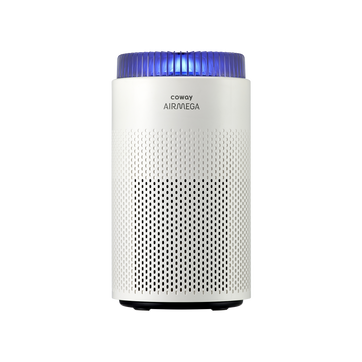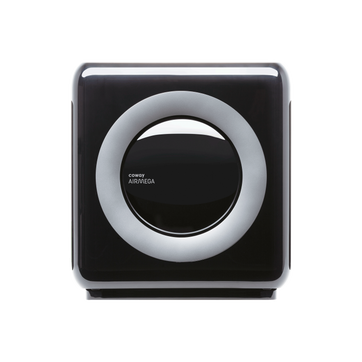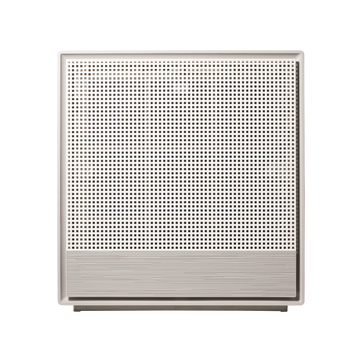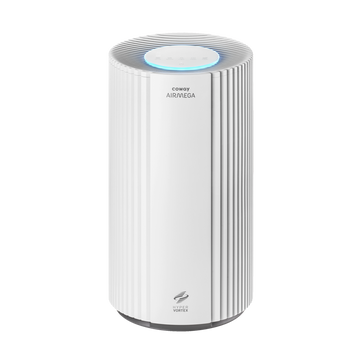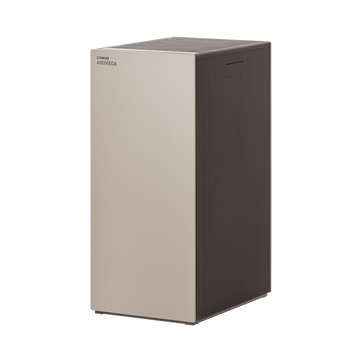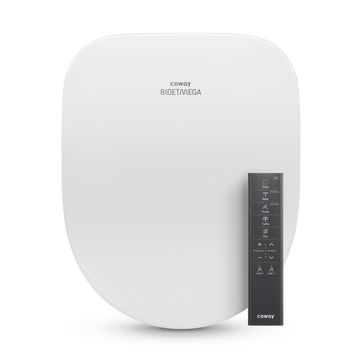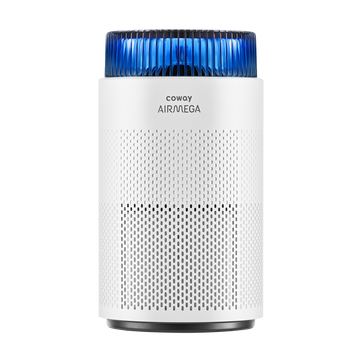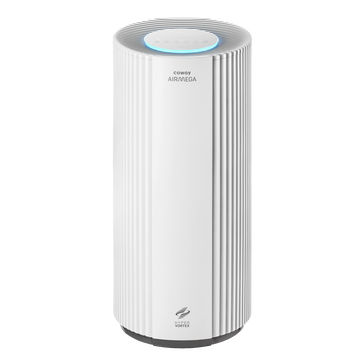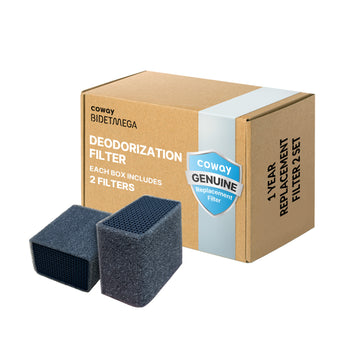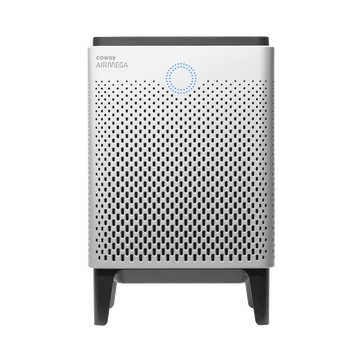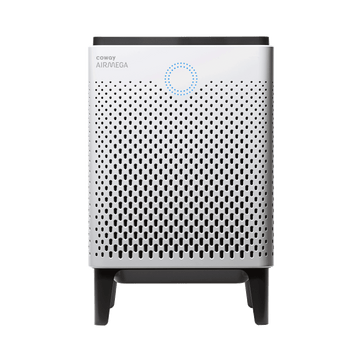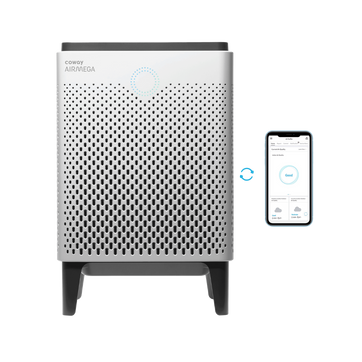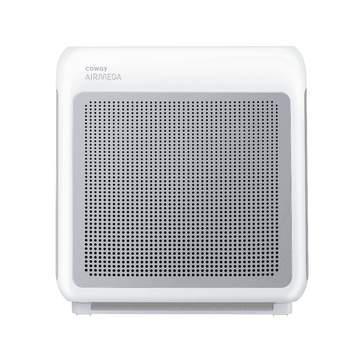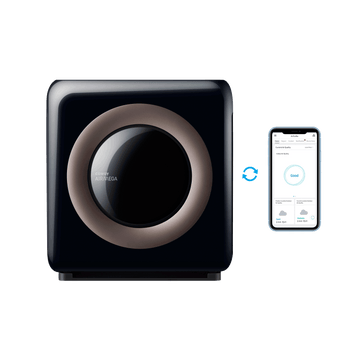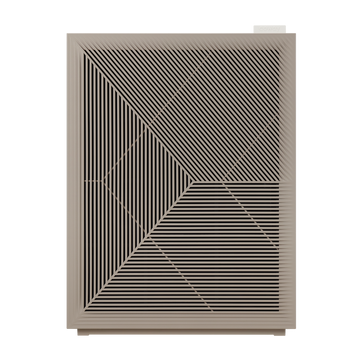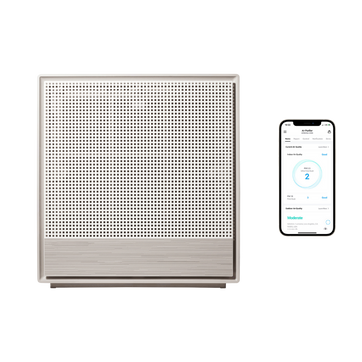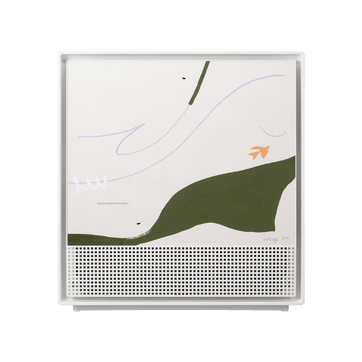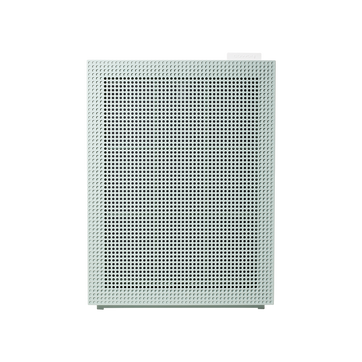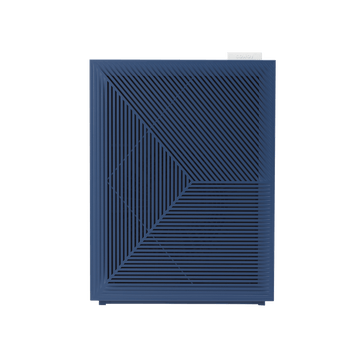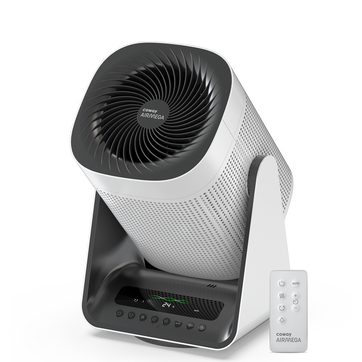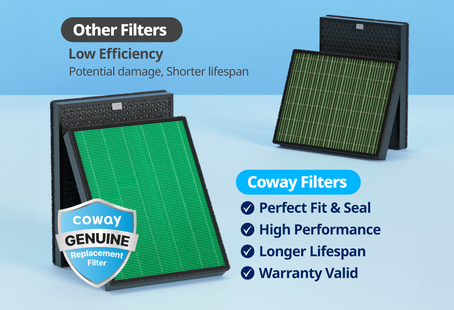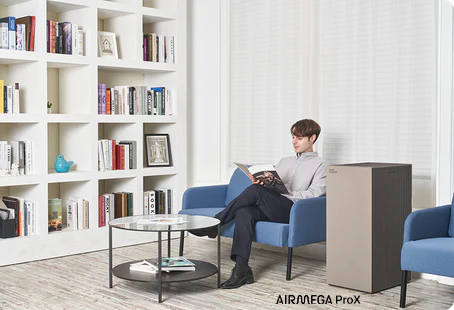
Air Purifier vs. Dehumidifier: What's the Difference?
When comparing air purifier vs dehumidifier options, many homeowners struggle to determine which device will be best at improving air quality. Everyone wants clean air, inside and out, and with so many products swirling around the market, the consumer has never had more opportunities to take advantage of the latest in air purification technologies.
With so much technical jargon to sift through and so many different devices to consider, keeping all the different options straight and finding the best one for your needs can be a challenge.
From removing excess moisture to filtering airborne particles, both devices play distinct roles in maintaining indoor air quality. While a dehumidifier removes excess moisture and helps prevent mold growth, an air purifier removes particles like dust, pollen, odors, and smoke from your indoor air.
Are Air Purifiers and Dehumidifiers the Same?
Air purifiers and dehumidifiers are often confused with one another because they can look similar and both offer a host of health benefits when used properly. However, dehumidifiers and air purifiers offer solutions to different air quality problems. Once you understand a few key differences between air purifiers and dehumidifiers it becomes much easier to know if one, or both, is right for you.
Before diving into each device, it's important to understand how humidity affects your indoor environment. High humidity levels create ideal conditions for dust mites and mold growth, which can trigger allergies and respiratory conditions. Maintaining appropriate relative humidity levels between 30-50% not only creates a more comfortable environment but also helps prevent the growth of dust mites and mold. This is where the distinct functions of air purifiers and dehumidifiers become particularly important.
What is an Air Purifier?
Clean air impacts everything from our respiratory system and blood system to our mood and general health. In fact, the Tennessee Department of Health encourages its citizens to take a breath of fresh air because it “can lessen the possibility of disease from stroke, heart disease, lung cancer as well as chronic and acute respiratory illnesses such as asthma.”
In short, air purifiers, like those included in the Coway Airmega Series, aim to provide these benefits, and more, in indoor environments through an advanced filtration process.
Ultimately, the goal of a top-quality purifier is to remove as many particles, viruses, volatile organic compounds (which are the gasses responsible for creating unwanted odors), and other airborne threats as possible.
How Do Air Purifiers Work?
Air purifiers operate by suctioning air from the outside through the filter and then pushing it back out into the same space that it just pulled it from. This cycle will repeat a certain number of times every hour, continually purifying the air in a given space. The volume of air a purifier can circulate in a given time and defined space is called the clean air delivery rate, or CADR.
CADR is a common metric used to describe the capacity of one purifier in comparison to the next. For example, the Airmega ProX has a CADR of 568 for smoke and can circulate all of the air in a 4,253-square-foot space in one hour. The Airmega 200M, on the other hand, has a CADR of 256 for smoke and can circulate and purify all of the air in a 1,748-square-foot room in one hour.
The industry standard filtration system is the High-Efficiency Particulate Air or HEPA filter. Green True HEPA™filters are certified to an industry standard of trapping 99.97² percent of particles smaller than 0.3 microns. Keep in mind that a standard HEPA filter is only the industry baseline and won’t filter the air as well as more complex processes, such as Coway’s unique filtration system.
The revolutionary Airmega Aim, for example, is the perfect solution for fresher indoor air. This 2-in-1 air purifier and fan traps dust, allergens, and odors with its powerful 3-stage filtration while providing cool, multidirectional airflow. The auto mode adjusts fan speeds based on detected air quality levels to save energy. Covering up to 492 sq ft an hour, this compact unit conveniently includes a remote control and operates quietly. With simple maintenance and a filter that lasts up to 8 months, the Airmega Aim makes it effortless to breathe cleaner air at home or the office.
When Should You Use an Air Purifier?
Air purifiers can be used all year round. While you don’t want to run your purifier constantly, the benefits of using it are always applicable. Whether you want to remove the presence of flower or tree pollen and other allergens in the summer or improve your mood by eliminating malodors, look no further than an air purifier.
Studies conducted by the EPA have shown that properly filtered air can even improve cognition and productivity. Keep in mind that the capacity of the air purifier should align with the size of the space that you want to purify.
What is a Dehumidifier?
Dehumidifiers, as the name suggests, eliminate excess humidity from the air and bring down excessive moisture level in a given space. This reduction in humidity serves multiple purposes: it helps prevent mold growth, reduce dust mites, and creates a less hospitable environment for various indoor air pollutants.
By removing excess moisture, dehumidifiers help eliminate condensation from forming on walls and windows, which is especially important if you use air conditioning in the winter. Another benefit of preventing moisture levels from getting out of hand is that it prevents harmful and smelly bacteria like mold and mildew from the damp environments they need to thrive.
How Do Dehumidifiers Work?
A dehumidifier removes excess moisture and are similar to air purifiers in that they both rely on a fan to draw air into the machine. However, while purifiers pass that air through a filtration process, dehumidifiers pass the air over several cooled coils.
- As the air passes over the coils, condensation forms on the coils and is thereby removed from the air.
- The air continues to flow out of the machine and back into the room while the condensation drips down into a water reservoir.
- Most dehumidifiers need to be manually emptied periodically, although some have built-in hoses or drainage systems.
Although dehumidifiers don’t have a filter, they do mitigate unwelcome smells as a result of helping prevent the growth of mold and mildew. However, dehumidifiers can’t do much about dander and other large particles in the air, nor can it do anything about the ultra-fine and microscopic particles either.
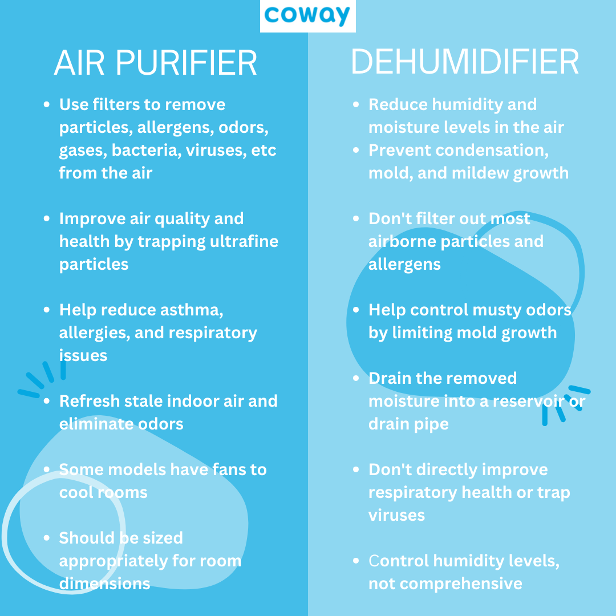
Air Purifiers vs. Dehumidifiers: Which Is Best For You?
While both air purifiers and dehumidifiers improve indoor air quality, an air purifier is generally the better choice if your main goal is removing allergens, odors, and indoor air pollutants.
Can you use both devices together?
Absolutely. In fact, using both an air purifier and dehumidifier can create a comprehensive approach to indoor air quality. The dehumidifier controls moisture levels, preventing conditions that lead to mold growth and dust mite proliferation, while the air purifier removes existing particles, allergens, and pollutants from the air to remove humidity. They work particularly well together in basements, bedrooms, and other spaces prone to both humidity and air quality issues.
Air purifiers use advanced filtration systems to trap particles as small as 0.01 microns, eliminating dust, pet dander, smoke, mold spores, bacteria, viruses, and more. They help reduce asthma and allergy symptoms as well as refreshing stale indoor air.
- Dehumidifiers mainly reduce humidity levels and condensation to control mold and mildew growth but don't filter out most airborne particles.
- Air purifiers provide comprehensive protection against indoor air pollution, making them the ideal solution for to improve respiratory problems and provide a cleaner indoor environment.
Keep Your Air Fresh and Clean With Coway
If you’re trying to keep your home safe from harmful pollution, investing in a high-quality air purifier from Coway is essential. Check out our range of purifiers to see which model best suits your space!
Frequently Asked Questions
Which is better, a dehumidifier or an air purifier?
Air purifiers are better for removing allergens, odors, and airborne pollutants like dust, pet dander, and smoke. Dehumidifiers are better for controlling moisture levels and preventing mold growth. Choose a desiccant dehumidifier based on your primary concern or use both for comprehensive air quality control.
Is an air purifier or dehumidifier better for musty smell?
A dehumidifier is better for musty smells since these odors typically stem from excess moisture that leads to mold and mildew. Once the moisture issue is addressed, an air purifier can help eliminate any lingering odors.
Does an air purifier dehumidify a room?
No, air purifiers do not affect humidity levels. They only take water vapor filter particles from the air through filtration systems. A separate dehumidifier is needed to remove excess moisture from the air.
Is a dehumidifier or air purifier better for mold?
A dehumidifier is better for preventing mold growth by removing excess moisture that mold needs to thrive. However, an air purifier with a HEPA filter can remove existing mold spores from the air. For complete mold control, using both devices is most effective.
Sources:
Tennessee Department of Health - Air
United States Environmental Protection Agency - What are volatile organic compounds (VOCs)?
United States Environmental Protection Agency - Reference Guide for Indoor Air Quality in Schools
Disclaimers
1Coway air purifiers have been proven to trap dust, pollen, dander, viruses and bacteria in the air based on KCL (Korea Conformity Laboratories) testing.They have been tested in a 30㎥ size chamber according to the Korea Air Cleaning Association standard (SPS-KACA 002-132:2022 Modified) to measure the 0.01㎛ size of particle removal rate. It was tested on maximum airflow speed in normal room temperature and humidity conditions. The performance may vary in the actual living environment of customers.
→ Tested with Airmega Aim, 50, 100, 150, 160, Tower AP-1216L, Mighty AP-1512HH, MightyS AP-1512HHS, 200M, Icon, IconS, 230, 240, 250, 250 Art, 250S, 300, 300S, 350, 400, 400S, 450, ProX
299.97% of viruses, bacteria, fungi and pollen were verified to be removed from the air for Coway air purifiers which have Green True HEPA™ filter applied based on the Japan Food Research Laboratories(JFRL) testing according to JEM 1467 standard.
→ Tested with Coway Airmega Mighty AP-1512HH, MightyS AP-1512HHS, 250, 250 Art, 250S, 300, 300S, 400, 400S
→ All tested by JFRL and received above result within below time.
4The concentration of ammonia, acetaldehyde and acetic acid were proven to be removed within 30 minutes by FCG Research Institute, Inc. Human Life Science Lab. It is not a demonstration result in the actual use space. Not all odors and gases may be supported. → Tested with Coway Airmega 150, 160, Mighty AP-1512HH, MightyS AP-1512HHS, 400, 400S
5The coverage area of the air purifier is based on an area where the air cleaner can make two air changes per hour (ACPH). An air change per hour translates to how many times an air purifier can clean an area, assuming the height of a ceiling to be 8 ft, in one hour. Therefore ** means two air changes per hour means that the cleaner can clean the area once every 30 minutes and * means air changes per hour means that the air purifier can clean the area once every 60 minutes.
10Terms and conditions apply. Discounts, including promotions, coupons, bundle discount and subscription discount, cannot be stacked on top of other coupons. During promotional periods, discount codes will not be able to be applied to orders. Promo codes may apply to products only—filters, accessories, and new products within 3 months of the release date are not included.
11Based on Coway R&D internal laboratory testing, activated carbon filtration was shown to remove up to 95% of ammonia odors within 40 minutes, and up to 99% of fecal odors within 20 minutes. Actual performance may vary depending on usage conditions.
